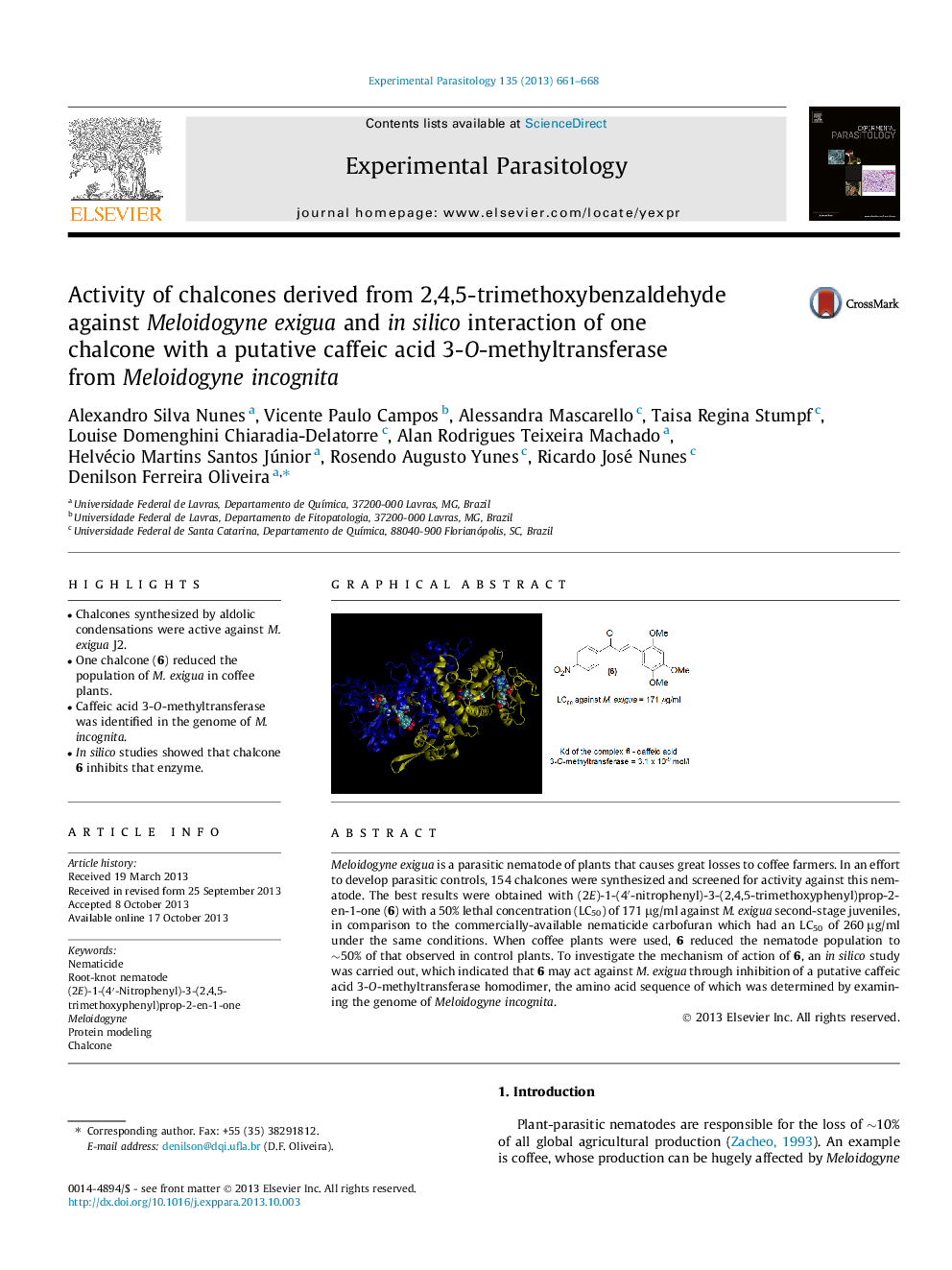| Article ID | Journal | Published Year | Pages | File Type |
|---|---|---|---|---|
| 4371128 | Experimental Parasitology | 2013 | 8 Pages |
•Chalcones synthesized by aldolic condensations were active against M. exigua J2.•One chalcone (6) reduced the population of M. exigua in coffee plants.•Caffeic acid 3-O-methyltransferase was identified in the genome of M. incognita.•In silico studies showed that chalcone 6 inhibits that enzyme.
Meloidogyne exigua is a parasitic nematode of plants that causes great losses to coffee farmers. In an effort to develop parasitic controls, 154 chalcones were synthesized and screened for activity against this nematode. The best results were obtained with (2E)-1-(4′-nitrophenyl)-3-(2,4,5-trimethoxyphenyl)prop-2-en-1-one (6) with a 50% lethal concentration (LC50) of 171 μg/ml against M. exigua second-stage juveniles, in comparison to the commercially-available nematicide carbofuran which had an LC50 of 260 μg/ml under the same conditions. When coffee plants were used, 6 reduced the nematode population to ∼50% of that observed in control plants. To investigate the mechanism of action of 6, an in silico study was carried out, which indicated that 6 may act against M. exigua through inhibition of a putative caffeic acid 3-O-methyltransferase homodimer, the amino acid sequence of which was determined by examining the genome of Meloidogyne incognita.
Graphical abstractFigure optionsDownload full-size imageDownload as PowerPoint slide
